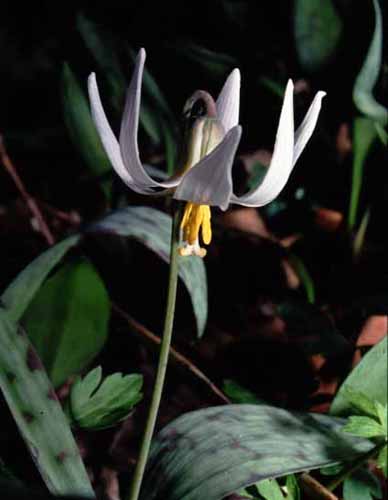Erythronium
Pot Cultivation
Dog's Tooth Violets are hardy from zones 3 to 8; although they all grow best where the ground freezes in the winter. These plants should be grown in well-drained, organic soil such as sandy loam with peat or leaf mold mixed in. The corms should be planted as early as possible in the fall, as soon as purchased; this allows them to develop roots before cold weather sets in. It is important not to let them dry out. Set them 4 or 5 inches deep and 3 to 5 inches apart. Water them while they are actively growing and blooming. During the summer, while they are dormant, it isn't necessary to water them, but place mulch over their space to maintain some moisture. Locate your plants in a light to medium shady area.
Propagation
Allow the seedpods to ripen and fall to the ground or sow them in containers. The seedlings will bloom in two or three years. The plants should only be disturbed when the become crowded. They can be lifted and divided when the leaves have died down. |
| E. albidum |
Species & Varieties
- E. dens-canis;
- E. revolutum;
- E. albidum;
- E. rostratum;
- E. americanum;
- E. californicum;
- E. grandiflorum;
- E. oregonum;
- E. citrinum;
- E. Hendersonii;
- E. purpurascens; 'Pagoda'.




